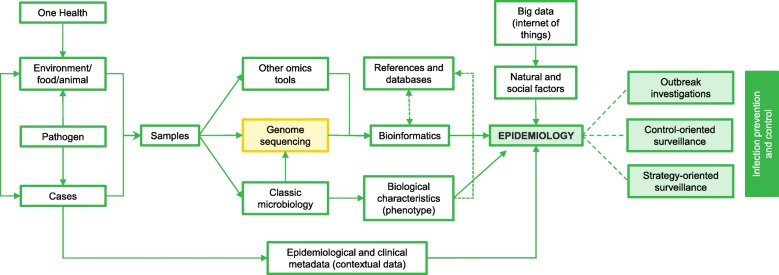Fig. 3.
Integration of multiple data types. The anticipated workflow of infection prevention and control includes the following: (1) samples are obtained from cases infected with a certain pathogen, as well as from other sources such as the environment, food, and/or animals following the One Health approach; (2) pathogens are isolated, and information concerning the biological characteristics is obtained through classical microbiological testing. Phenotypic tests are still required to feed databases and confirm genotype-phenotype associations. Culturing steps (isolation) are often preceding genome sequencing; however, sequencing directly from clinical samples is also possible using culture-independent methods (metagenomics); (3) high-throughput sequence data is generated (other -omics technologies such as transcriptomics, proteomics, and metabolomics can complement the genomic information); (4) relationships among isolates and specific characteristics are inferred based on sequence information obtained through bioinformatics tools; (5) to come to a meaningful outcome (i.e., transmission chains, cluster identification, source tracing, key phenotypic attributes), the genomic evidence is combined with epidemiological metadata (time, place, exposures, etc.) from field epidemiological investigations, clinical data obtained through the healthcare system, biological characteristics obtained through classic microbiological methods, and big data on natural and social factors. Finally, infection prevention and control measures can be conducted on the basis of this aggregated information

